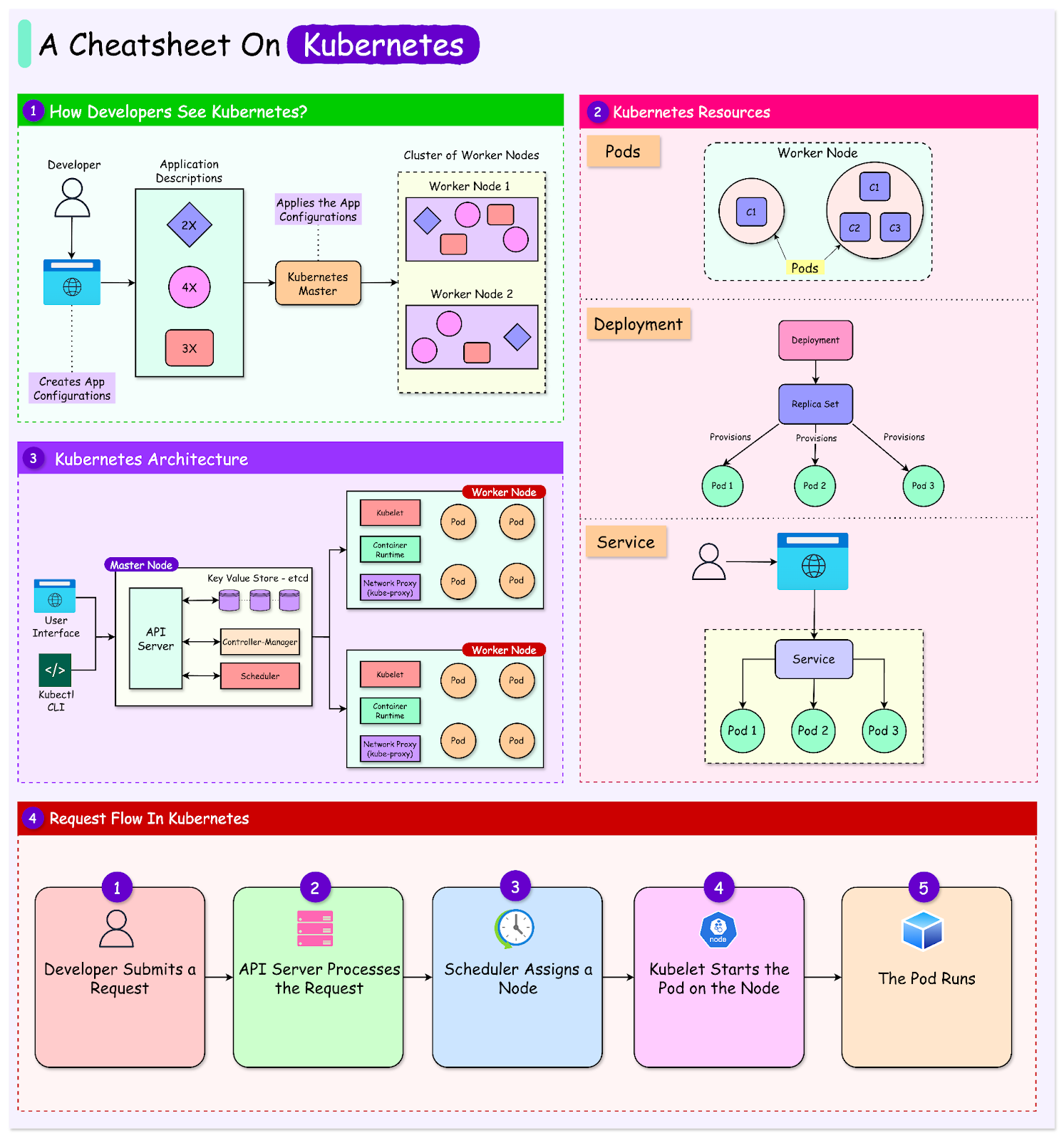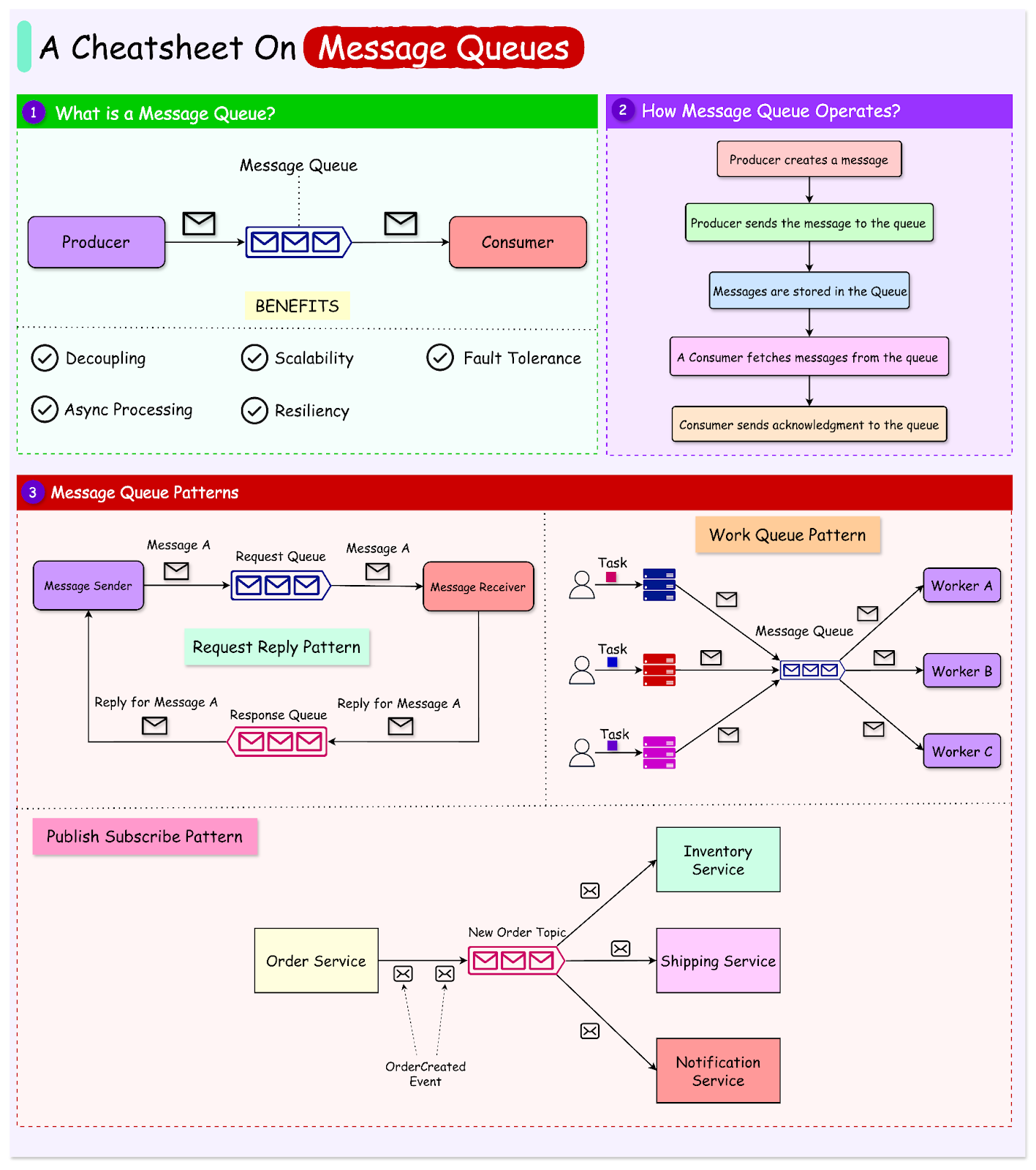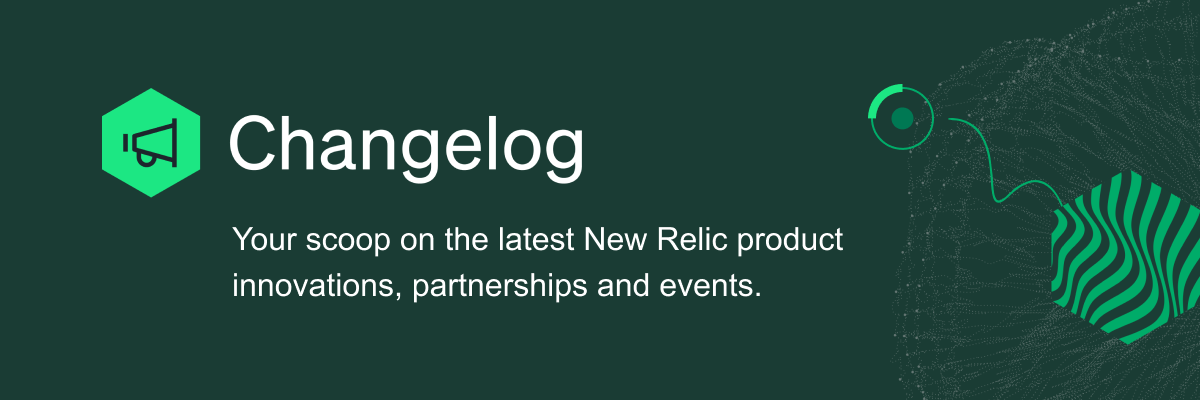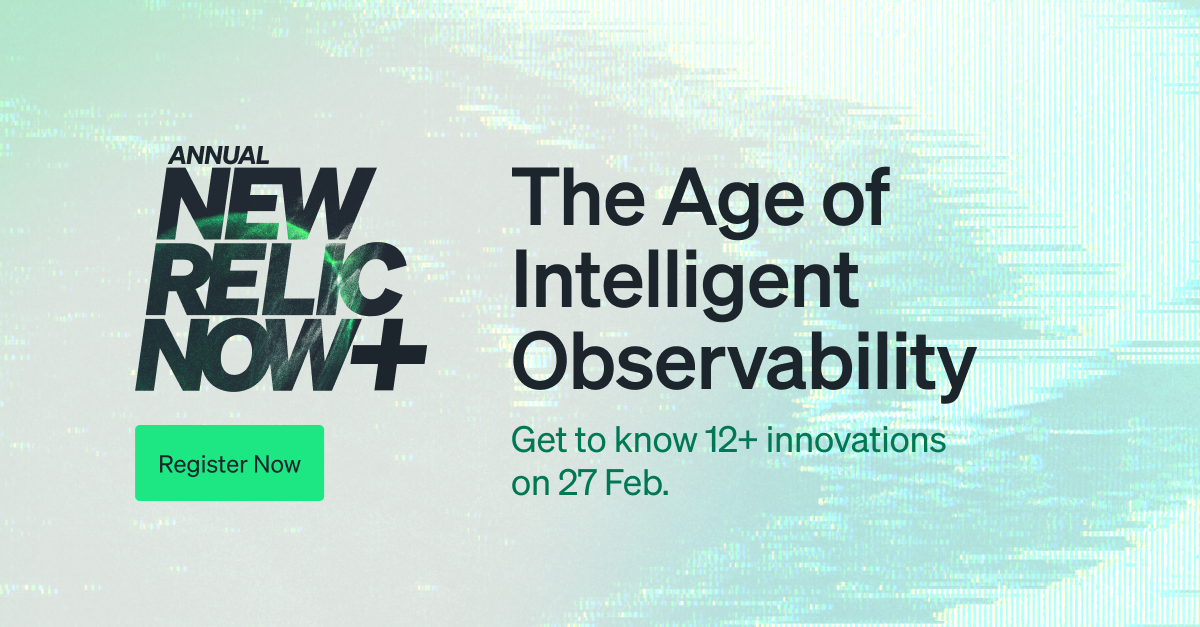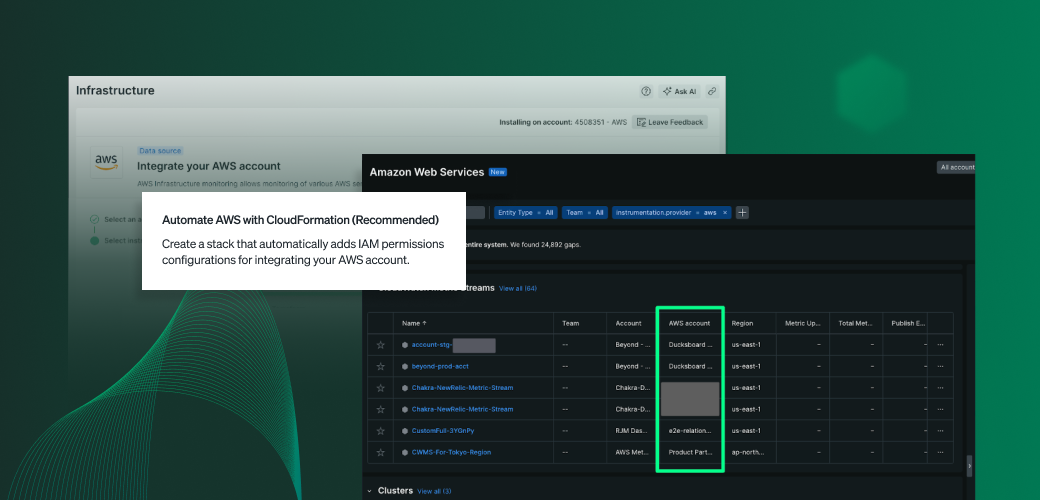Archives
- By thread 5360
-
By date
- June 2021 10
- July 2021 6
- August 2021 20
- September 2021 21
- October 2021 48
- November 2021 40
- December 2021 23
- January 2022 46
- February 2022 80
- March 2022 109
- April 2022 100
- May 2022 97
- June 2022 105
- July 2022 82
- August 2022 95
- September 2022 103
- October 2022 117
- November 2022 115
- December 2022 102
- January 2023 88
- February 2023 90
- March 2023 116
- April 2023 97
- May 2023 159
- June 2023 145
- July 2023 120
- August 2023 90
- September 2023 102
- October 2023 106
- November 2023 100
- December 2023 74
- January 2024 75
- February 2024 75
- March 2024 78
- April 2024 74
- May 2024 108
- June 2024 98
- July 2024 116
- August 2024 134
- September 2024 130
- October 2024 141
- November 2024 171
- December 2024 115
- January 2025 216
- February 2025 140
- March 2025 220
- April 2025 233
- May 2025 239
- June 2025 303
- July 2025 173
-
[FHL] O.G. of Internet Marketing (NEW interview)
With only $1.83 in his pocket he built THIS…It’s Friday and I have a special treat for you today, oh man…
But first, if you didn’t catch the interview I did with retired NFL player turned entrepreneur Trent Shelton (and secured his FREE bonus!!)… then go here now WATCH the short interview →
So many ‘a-ha’ moments packed in a dense, short interview – ah… it’s always so amazing to get the chance to chat with Trent. So excited to have him back at the FINAL FHL in Vegas!!
Now… onto today’s interview!
Here’s why I love the next FHL speaker I’m going to interview today…
He’s been “in-the-trenches” when it comes to the Internet Marketing world for over 20+ years…
He’s seen it all. He’s done it all.
…AND he still has one of the best, all-time “stack and close” systems that absolutely CRUSHES it to this day, and continues to crush for any niche or industry.
Plus! Because he’s been in the game and doing it for so long… he’s mastered what “works” and then has gone on to help his clients and students achieve their online business goals.
And to think it all started with only $1.83 in his pocket…
His name is Armand Morin and I’m so excited to be interviewing him TODAY @ 2:00 PM ET!!
WATCH TODAY’S INTERVIEW W/ ARMAND MORIN @ 2:00 PM ET →
(Hint: This is YOUR sign if you are someone who wants the blueprint to building YOUR OWN online empire, EVEN on a shoe-string budget…)
You DO NOT want to miss this…
Not to mention, Armand just told me the FREE bonus he’ll be giving away when you purchase a ticket to FHL…
“Generous” would be a critical understatement when it comes to this FREE marketing bonus Armand is giving away. That’s all I’m going to say…
WATCH TODAY’S INTERVIEW W/ ARMAND MORIN @ 2:00 PM ET →
See you there!
© Etison LLC
By reading this, you agree to all of the following: You understand this to be an expression of opinions and not professional advice. You are solely responsible for the use of any content and hold Etison LLC and all members and affiliates harmless in any event or claim.
If you purchase anything through a link in this email, you should assume that we have an affiliate relationship with the company providing the product or service that you purchase, and that we will be paid in some way. We recommend that you do your own independent research before purchasing anything.
Copyright © 2018+ Etison LLC. All Rights Reserved.
To make sure you keep getting these emails, please add us to your address book or whitelist us. If you don't want to receive any other emails, click on the unsubscribe link below.
Etison LLC
3443 W Bavaria St
Eagle, ID 83616
United States
by "Russell Brunson" <noreply@clickfunnelsnotifications.com> - 12:27 - 10 Jan 2025 -
Davos divination: What to expect at this year’s meeting
The Shortlist
Emerging ideas for leaders Curated by Alex Panas, global leader of industries, & Axel Karlsson, global leader of functional practices and growth platforms
Welcome to the latest edition of the CEO Shortlist, a biweekly newsletter of our best ideas for the C-suite. This week, we feature some of the ideas we’re bringing to the World Economic Forum’s Annual Meeting in Davos later this month. Every year, we collaborate with WEF to investigate the year’s most critical issues, and our in-house institutes—covering global business trends, health and wellness, and Black economic development—examine many more. We appreciate the opportunity to connect and hope you find our perspectives novel and insightful. Let us know if you want to meet up at Davos the week after next. You can reach us at Alex_Panas@mckinsey.com and Axel_Karlsson@mckinsey.com. Thank you, as ever.
—Alex and Axel
Global cooperation has flatlined. Our second annual Global Cooperation Barometer finds that, on average, global cooperation has held steady. Precipitous declines in some areas, such as peace and security, have been balanced out by modest increases in foreign direct investment and flows of data and intellectual property.
Economic empowerment made practical. In an update to the McKinsey Global Institute’s pioneering research on economic empowerment, we detail more than 60 ways that businesses can support their workforces, customers, suppliers, and broader communities to build richer, more rewarding lives.
We hope you find these ideas inspiring and helpful. See you in a couple of weeks with more McKinsey ideas for the CEO and others in the C-suite.Share these insights
This email contains information about McKinsey’s research, insights, services, or events. By opening our emails or clicking on links, you agree to our use of cookies and web tracking technology. For more information on how we use and protect your information, please review our privacy policy.
You received this email because you subscribed to The CEO Shortlist newsletter.
Copyright © 2025 | McKinsey & Company, 3 World Trade Center, 175 Greenwich Street, New York, NY 10007
by "McKinsey CEO Shortlist" <publishing@email.mckinsey.com> - 04:15 - 10 Jan 2025 -
Technology priorities for 2025, gen AI for beauty brands, how companies can benefit more people, and more highlights for your downtime
New year, new insights Brought to you by Alex Panas, global leader of industries, & Axel Karlsson, global leader of functional practices and growth platforms
Welcome to the latest edition of The Weekend Read. We hope you find our perspectives useful. Let us know what you think at Alex_Panas@McKinsey.com and Axel_Karlsson@McKinsey.com.
—Alex and Axel
Ready to unwind?
—Edited by Joyce Yoo, editor, New York
Share these insights
Did you enjoy this newsletter? Forward it to colleagues and friends so they can subscribe too. Was this issue forwarded to you? Sign up for it and sample our 40+ other free email subscriptions here.
This email contains information about McKinsey's research, insights, services, or events. By opening our emails or clicking on links, you agree to our use of cookies and web tracking technology. For more information on how we use and protect your information, please review our privacy policy.
You received this email because you subscribed to our McKinsey Global Institute alert list.
Copyright © 2025 | McKinsey & Company, 3 World Trade Center, 175 Greenwich Street, New York, NY 10007
by "McKinsey Weekend Read" <publishing@email.mckinsey.com> - 12:39 - 10 Jan 2025 -
shock absorber
Dear info,
Greetings from Henghong Intelligent Equipment Co.,Ltd!
We are professional in R&D,production and sales of automotive shock absorbers.Our team has explored your website and noticed significant synergies between our product lines.With in-depth knowledge of your market,we are eager to share valuable insights and explore potential collaborations with you.
Would you like to accept our catalogue?It could open up new avenues for common development.
Best Regards!
Echo Gao
by "Fa nab Mkn" <3047930@gmail.com> - 04:57 - 9 Jan 2025 -
Understanding Message Queues
Understanding Message Queues
Asynchronous communication has become an important strategy for modern software systems, particularly in distributed and large-scale applications.͏ ͏ ͏ ͏ ͏ ͏ ͏ ͏ ͏ ͏ ͏ ͏ ͏ ͏ ͏ ͏ ͏ ͏ ͏ ͏ ͏ ͏ ͏ ͏ ͏ ͏ ͏ ͏ ͏ ͏ ͏ ͏ ͏ ͏ ͏ ͏ ͏ ͏ ͏ ͏ ͏ ͏ ͏ ͏ ͏ ͏ ͏ ͏ ͏ ͏ ͏ ͏ ͏ ͏ ͏ ͏ ͏ ͏ ͏ ͏ ͏ ͏ ͏ ͏ ͏ ͏ ͏ ͏ ͏ ͏ ͏ ͏ ͏ ͏ ͏ ͏ ͏ ͏ ͏ ͏ ͏ ͏ ͏ ͏ ͏ ͏ ͏ ͏ ͏ ͏ ͏ ͏ ͏ ͏ ͏ ͏ ͏ ͏ ͏ ͏ ͏ ͏ ͏ ͏ ͏ ͏ ͏ ͏ ͏ ͏ ͏ ͏ ͏ ͏ ͏ ͏ ͏ ͏ ͏ ͏ ͏ ͏ ͏ ͏ ͏ ͏ ͏ ͏ ͏ ͏ ͏ ͏ ͏ ͏ ͏ ͏ ͏ ͏ ͏ ͏ ͏ ͏ ͏ ͏ ͏ ͏ ͏ ͏ ͏ ͏ ͏ ͏ ͏ ͏ ͏ ͏ ͏ ͏ ͏ ͏ ͏ ͏ ͏ ͏ ͏ ͏ ͏ ͏ ͏ ͏ ͏ ͏ ͏ ͏ ͏ ͏ ͏ ͏ ͏ ͏ ͏ ͏ ͏ ͏ ͏ ͏ ͏ ͏ ͏ ͏ ͏ ͏ ͏ ͏ ͏ ͏ ͏ ͏ ͏ ͏ Forwarded this email? Subscribe here for moreLatest articles
If you’re not a subscriber, here’s what you missed this month.
Kubernetes Made Easy: A Beginner’s Roadmap to Container Orchestration
The Sidecar Pattern Explained: Decoupling Operational Features
Database Performance Demystified: Essential Tips and Strategies
Mastering Modern Authentication: Cookies, Sessions, JWT, and PASETO
Stateless Architecture: The Key to Building Scalable and Resilient Systems
To receive all the full articles and support ByteByteGo, consider subscribing:
Asynchronous communication has become an important strategy for modern software systems, particularly in distributed and large-scale applications.
Unlike synchronous communication, where a sender waits for a response before proceeding, asynchronous communication allows processes to continue without waiting. This has a significant impact on the system's performance, scalability, and resilience.
Some real-world scenarios where async communication shines are as follows:
An online store where an order placement triggers real-time calls to inventory, payment, and shipping services. If any of these services experience latency or downtime, the order process stalls, leading to poor user experience and lost revenue. Using a message queue, the order service can immediately enqueue messages for inventory, payment, and shipping.
IoT systems like smart home devices often involve thousands of sensors sending data to central servers. A synchronous approach can overwhelm the server during peak activity, leading to data loss or delayed responses. Message queues allow sensors to send data without waiting for processing.
In a microservices architecture, tightly coupled services communicating synchronously can create cascading failures. With message queues, services communicate indirectly, reducing dependency and allowing independent scaling.
These are just a few examples. There are several potential scenarios where async communication is important. But what makes async communication possible?
This is where message queues come into the picture.
Message queues act as intermediaries, enabling asynchronous between producers (senders) and consumers (receivers). In this article, we’ll look at understanding how message queues work, the various terminologies involved, and the patterns that can be implemented using them.
What is a Message Queue?...

Continue reading this post for free in the Substack app
Like
Comment
Restack
© 2025 ByteByteGo
548 Market Street PMB 72296, San Francisco, CA 94104
Unsubscribe
by "ByteByteGo" <bytebytego@substack.com> - 11:36 - 9 Jan 2025 -
[FHL] Retired NFL player interview! (plus FREE bonus!)
Want to unleash your FULL potential…?Say it with me:
33 days…
That’s right — we are just 33 days away from the (last and greatest) marketing rock concert of the century!
Now, real quick – if you haven’t secured your FHL ticket and nabbed yesterday’s FREE bonus with Tim Shields… then go here now WATCH the short interview →
(You’ll also be able to grab her FREE bonus worth at least $997 in real marketing value… which is all yours to help you have a thriving online business in 2025, even if you think your “idea” wouldn’t work!)
Now… onto today’s interview!
Question: How do you calculate your worth?
Is it based on what “physical things” you own like cars and jewlrey…?
Is it based on the number of sales you bring in (e.g., “hustling” 24/7)...??
Or…
What if I told you it has ZERO to do with any of those things – nothing about your productivity and nothing about those commas in your bank account…?
In today’s interview, I’m thrilled to bring on the one and only… Trent Shelton!
WATCH TODAY’S INTERVIEW W/ TRENT SHELTON @ 2:00 PM ET →
Retired NFL player turned entrepreneur Trent Shelton has been helping THOUSANDS of entrepreneurs around the world tap into their “real worth value” deep within themselves, and how to use this gift to create an AVALANCHE of success in all areas of life!
If you struggle with perfectionism…
If you’re tired of feeling like you’re not reaching your full potential in work, life, or relationships…
And if you know, deep down, you were made for something MORE in this world…
Then you HAVE to join me TODAY @ 2:00pm ET as I sit down and interview the ONE AND ONLY… Trent Shelton!
WATCH TODAY’S INTERVIEW W/ TRENT SHELTON @ 2:00 PM ET→
I don’t know a better person that can help get yourself out of a funk and start seeing success like you wouldn’t believe, then my man, Mr. Trent Shelton.
Anyway, I’ve rattled on long enough…
Just do whatever it takes to join me today @ 2:00pm ET with Trent Shelton!
And remember to keep your eyes peeled for tomorrow’s email with another speaker interview!!
(Hint: tomorrow’s interview is with one of the ORIGINAL Internet Marketers who has one of the most masterful “stack & close” offers that’s practically bullet proof, and nearly impossible for anyone to say “no” to…)
See you today @ 2:00 PM ET here →
See you there!Russell Brunson
P.S. Don’t forget, you’re just one funnel away…
© Etison LLC
By reading this, you agree to all of the following: You understand this to be an expression of opinions and not professional advice. You are solely responsible for the use of any content and hold Etison LLC and all members and affiliates harmless in any event or claim.
If you purchase anything through a link in this email, you should assume that we have an affiliate relationship with the company providing the product or service that you purchase, and that we will be paid in some way. We recommend that you do your own independent research before purchasing anything.
Copyright © 2018+ Etison LLC. All Rights Reserved.
To make sure you keep getting these emails, please add us to your address book or whitelist us. If you don't want to receive any other emails, click on the unsubscribe link below.
Etison LLC
3443 W Bavaria St
Eagle, ID 83616
United States
by "Russell Brunson" <noreply@clickfunnelsnotifications.com> - 10:54 - 9 Jan 2025 -
Think Deserts Are Hot? Discover the Icy Truth About Antarctica
Think Deserts Are Hot? Discover the Icy Truth About Antarctica
The largest desert in the world: Antarctica, a Guide to Solving the 4 Most Common Address Data Struggles, Monthly Changes.
Hi, I’m Jérôme Urbain, head of Products, wishing you a Happy New Year. I’ll be here to share more location data knowledge this 2025 and look forward to achieving great results together. Let’s dive into this month's updates!
Solve the 4 most common address data challenges
Monthly changes
❄️ The largest desert in the world: Antarctica ❄️
The largest desert in the world: Antartica
Did you know that Antarctica is the world's largest desert?
Despite its icy landscape, it receives less than 2 inches of precipitation annually, classifying it as a desert.
This frozen field holds about 70% of Earth's freshwater, locked away in its massive ice sheets.
Intriguingly, Antarctica is also home to the McMurdo Dry Valleys, one of the driest places on Earth, where some areas haven't seen rain for nearly 2 million years.
So, next time you think of deserts, remember: they aren't all hot and sandy—some are cold and icy, too!
Follow us on LinkedIn for more geographical facts like this!
GUIDE
Solve the 4 most common address data challenges
The start of the year is a good moment to make sure your location data is accurate. Integrate our the latest data and get some tips for improving your address data processing.
Address structures vary across borders
Navigating global postal systems can be tricky. While most use zip codes, some countries work with other references, such as cities. Here's a compilation of countries with alternative postal systems.
Managing non-latin alphabets
Tackling global addresses means accommodating multiple alphabets. Learn how transliteration bridges the gap for a unified database.
Constant zip code changes
ZIP codes evolve frequently, impacting your address accuracy. Understand how to adapt and explore international ZIP code formats with this guide.
Simplify address data maintenance
Manually managing global address data is time-intensive. Explore best practices and cleansing methods to save time and costs.
Our team is committed to help you overcome any location data issue you'd face in 2025.
MONTHLY CHANGES
In December, we updated 183,142 rows in our postal database.
Full Postal & Street updates
Hungary, Poland
Postal database patches
(small changes)
Belgium (Municipality merge), Cyprus (Business), France (Alternative names for big cities' arrondissements), Guam (Alternative names), Ukraine (Regions codes), United Kingdom (Postcodes)
Postal boundaries updates
Hungary, New Zealand
Postal boundaries patches (small changes)
Austria, Canada, Croatia, Dominican Republic, Haiti, Israel, Jordan, Mexico, Palestine, Romania, Serbia, Slovenia, Thailand, Ukraine, United States
Administrative boundaries patches (small changes)
Falkland Islands, Finland, Spain
For a detailed changelog, take a look at the CSV file.
Kind regards,
Jérôme & the GeoPostcodes team
PS: Interested in previous Monthly Product Updates? Read here.
GeoPostcodes, Bld Bischoffsheim 15, 1000 Bruxelles, Belgium
by "Jérôme from GeoPostcodes" <jerome@geopostcodes.com> - 06:43 - 9 Jan 2025 -
New Relic Now 2025: Hear about our most transformative platform update yet
New Relic
Learn about our most transformative platform update at New Relic Now 2025.
 December 2024
December 2024
New Relic Now 2025 27 February (9am GMT / 10am CET)
This free virtual event will showcase 12+ new features to:- Elevate digital experiences: Discover predictive remediation that ensures seamless interactions with customers.
- Automate with AI: See how agentic AI handles both common and uncommon tasks, and empowers developers.
- Limit costs: Identify and avoid unnecessary cloud and operational costs.
Save your seat now 
Automatic instrumentation and AI-powered insights with one-step AWS Start quickly with automatic instrumentation, seamless multi-account onboarding, agentless EC2 monitoring, and a unified UI for your entire AWS environment. Troubleshoot faster with pre-built dashboards that automatically correlate applications and AWS infrastructure, without the need for tagging.Learn more 
 Does Your DEM Strategy Connect All the Dots?Discover the value of comprehensive digital experience monitoring (DEM) in our ebook. Learn how to optimize digital experiences, prevent disruptions, and elevate user satisfaction. Explore solutions that integrate critical data and leverage AI to ensure seamless, always-on digital interactions.
Does Your DEM Strategy Connect All the Dots?Discover the value of comprehensive digital experience monitoring (DEM) in our ebook. Learn how to optimize digital experiences, prevent disruptions, and elevate user satisfaction. Explore solutions that integrate critical data and leverage AI to ensure seamless, always-on digital interactions.
Learn MoreOptimize application performance with effective tracing and loggingLearn how tracing and logging techniques can optimize application performance, enhance user satisfaction, and ensure business success.
Read the blog
Banco Inter sees into digital customer experienceRead the case study to discover how Banco Inter leverages New Relic to achieve 57% faster MTTR and deliver a seamless digital banking experience to over 5 million customers. New Relic Now February 2025Exciting news! We’re unveiling New Relic’s most transformative platform update yet—and you’re invited. This free, virtual event on 27 February (9am GMT / 10am CET) will showcase our biggest, most exciting group of innovation announcements ever, including a sneak peek at our 12+ new features, including agentic AI.Save your spot here.New Relic University online workshopsCatch our recent New Relic workshops on-demand. These trainer-led workshops with hands-on labs will help you up-level your observability skills.
New Relic Now February 2025Exciting news! We’re unveiling New Relic’s most transformative platform update yet—and you’re invited. This free, virtual event on 27 February (9am GMT / 10am CET) will showcase our biggest, most exciting group of innovation announcements ever, including a sneak peek at our 12+ new features, including agentic AI.Save your spot here.New Relic University online workshopsCatch our recent New Relic workshops on-demand. These trainer-led workshops with hands-on labs will help you up-level your observability skills.
Watch now Amazon CloudWatch Network MonitorAmazon CloudWatch Network Monitor offers real-time visibility into hybrid network performance between AWS and on-premises systems. Connect it to New Relic for enhanced insights, proactive issue detection, and advanced analytics to ensure optimal network health.
Amazon CloudWatch Network MonitorAmazon CloudWatch Network Monitor offers real-time visibility into hybrid network performance between AWS and on-premises systems. Connect it to New Relic for enhanced insights, proactive issue detection, and advanced analytics to ensure optimal network health.
Install Quickstart Manage dashboards via APIUse our NerdGraph to create and manage your dashboards. Create, update, even undelete dashboards with ease. You can even add or update widgets! Find a list of mutations and queries here.
Manage dashboards via APIUse our NerdGraph to create and manage your dashboards. Create, update, even undelete dashboards with ease. You can even add or update widgets! Find a list of mutations and queries here.
Not an existing New Relic user? Sign up for a free account to get started!

Need help? Let's get in touch.



This email is sent from an account used for sending messages only. Please do not reply to this email to contact us—we will not get your response.
This email was sent to info@learn.odoo.com Update your email preferences.
For information about our privacy practices, see our Privacy Policy.
Need to contact New Relic? You can chat or call us at +44 20 3859 9190.
Strand Bridge House, 138-142 Strand, London WC2R 1HH
© 2025 New Relic, Inc. All rights reserved. New Relic logo are trademarks of New Relic, Inc
by "New Relic" <emeamarketing@newrelic.com> - 05:07 - 9 Jan 2025 -
Re: Cost..$
Hello,
I’m writing to follow up. Since I haven't received a reply, I assume
you are either busy or haven't had a chance to reply.
May I send you a quote & Price?
Thank You…!!
From: Zahir khan
Sent: Wednesday, October 23, 2024, 11:22 PMTo: ZAKIR KHAN <ZAKIKHAN996Y@hotmail.com>
Subject: Fwd.: Cost?
Hi,
I was going through your website and I personally see a lot of potential in your website and business,
It will show you exactly what needs to be done to move you up in the rankings dramatically,
Let me know If you are interested. May I send you quote and Price list?
Thanks,[Zahir khan]Business Executive || SEO Expert
by "ZAKIR KHAN" <ZAKIKHAN996Y@hotmail.com> - 04:51 - 9 Jan 2025 -
Mastercard achieves zero downtime with Postgres
Hi Md Abul,I am Ganesh Kale from the EDB Postgres SEA team. Given the massive scale changes in payment and digital banking, any moment of database downtime can have far-reaching consequences for your business.Luckily, EDB Postgres offers proven capabilities to keep your database up and running, all while offering a significantly lower TCO than Oracle. If you are facing similar database downtimes and high-cost for your UPI technology stack, payment gateway, digital banking or credit card stack, reach out to us.Our customer Mastercard was able to achieve 99.999% uptime by leveraging logical replication over binary streaming replication. Please visit the following blog post to learn more. Why Mastercard's Secret to Zero Downtime is PostgreSQL
Alternatively, let me know if you want to schedule a workshop with your team. We have a few open slots this week on Monday and Wednesday. looking forward to hearing from you.
Best,

by "Ganesh Kale" <ganesh.kale@enterprisedb.com> - 04:04 - 9 Jan 2025 -
A lifelong quest: The journey of leadership never ends
Re:think
The lifelong journey of leadership
by "McKinsey Quarterly" <publishing@email.mckinsey.com> - 02:46 - 8 Jan 2025 -
ClickFunnels trial: Why we need your CC details…
Let’s cut straight to the chase – there’s a GOOD reason for it.Let’s cut to the chase:
If you’re like most people, you were EXCITED about starting your FREE 14-day ClickFunnels trial..
But when you got to the page where we asked for your credit card details, you might’ve gotten ‘scared off’.
Like, “Why do they need my info for a free trial?!”
We get it. It might seem a bit contradictory.
But honestly, there’s a really good reason for it — and it’s all about making YOUR experience inside as smooth and beneficial as possible.
See, once you're inside ClickFunnels, you’re gonna…
Start building your first funnel with the help
Of the One Funnel Away Challenge
(unlocked at no-cost to you)!
This challenge reveals the 10-day blueprint to launch your first (or next) successful funnel with nothing but ClickFunnels…
With day-by-day breakdowns so digestible, you can implement them in under 60 mins per day.
In short: when you jump in, you’re gonna be on the path to a funnel that’s LIVE in 30 days or less…
Jumping inside ClickFunnels each and every day.
And time will FLY because you’re having fun building your funnel!
Which is why it’d be awful if, in 30 days from now, that funnel you were building was lost because your trial ended before you remembered to join as a full user. :(
So we don’t want that for you.
We want you on the smoothest, most uninterrupted path to MASSIVE funnel success as possible.
And besides One Funnel Away showing you the right way forward…
Having your CC info will make sure you’re good to go from day one til LAUNCH DAY!!
No re-entering payment details, no service interruptions, just a smooth continuation of your journey with us, and the One Funnel Away Challenge.
So head back over to where you left off, and…
Finish Setting Up Your 14-Day FREE ClickFunnels Trial Here
And get free INSTANT ACCESS to the One Funnel Away Challenge!
Thanks,
-ClickFunnels Team
P.S. - These users were overjoyed they stayed with ClickFunnels and the One Funnel Away Challenge:
⭐⭐⭐⭐⭐
"The One Funnel Away Challenge blew away ALL of the other courses and trainings I invested in... it was full of brilliant value. It's a whole different mindset... I followed the training advice and it gave my business a MASSIVE push.”
~Mark Felstead
⭐⭐⭐⭐⭐
"My favorite part... The encouragement from the OFA team. I really appreciated the way they showcased that virtually ANYONE can find a way to use funnels and generate revenue."
~Ren B
⭐⭐⭐⭐⭐
"OFA challenge, in a nutshell, is ALL, I mean ALL what you need to understand Online Marketing (and offline too). And the Coaching Calls?...well. This is the best program I’ve ever been a part of."
~Pablo P
It’s all inside your ClickFunnels trial today. ;)
Complete Your ClickFunnels Trial & Start Your ONE FUNNEL AWAY Journey!
© Etison LLC
By reading this, you agree to all of the following: You understand this to be an expression of opinions and not professional advice. You are solely responsible for the use of any content and hold Etison LLC and all members and affiliates harmless in any event or claim.
If you purchase anything through a link in this email, you should assume that we have an affiliate relationship with the company providing the product or service that you purchase, and that we will be paid in some way. We recommend that you do your own independent research before purchasing anything.
Copyright © 2018+ Etison LLC. All Rights Reserved.
To make sure you keep getting these emails, please add us to your address book or whitelist us. If you don't want to receive any other emails, click on the unsubscribe link below.
Etison LLC
3443 W Bavaria St
Eagle, ID 83616
United States
by "ClickFunnels" <noreply@clickfunnelsnotifications.com> - 02:26 - 8 Jan 2025 -
Discover High-Quality Portable Laser Marking and Inkjet Coding Machines
Hi,
This is Cindy from Kecmark in Hangzhou, China.
Our factory, established in 2014, specializes in supplying portable laser marking machines and inkjet coding machines that are widely utilized in the pharmaceutical, industrial, and food processing sectors.
We eagerly anticipate providing you with comprehensive information regarding Kecmark laser marking machines.
Sincerely yours,
Cindy Huang
Sales Manager
WhatsApp: +86 18667152532
Email:cindy@kec-mark.com
----------------------------------------------------------------------------------

by "ling" <ling@hzkecmark.com> - 02:21 - 8 Jan 2025 -
[FHL] NEW interview! Photographer turned entrepreneur
He grew his Instagram to 1 MM followers in 100 days!New day, which means a new interview with an FHL speaker plus another FREE bonus!!!
Real quick – if you haven’t secured your FHL ticket and nabbed yesterday’s FREE bonus with Eileen Wilder… then go here now WATCH the short interview →
(You’ll also be able to grab her FREE bonus worth over $437 that can help INCREASE your sales in 2025 by up to 5X or more!!!)
Now…
In today’s interview, I’m going to be speaking to a world-class photographer and entrepreneur who has helped THOUSANDS of people (like yourself)... turn their passions into thriving businesses!!!
His name is Tim Shields!
And last year, Tim BLEW MY MIND when he showed me this simple, 2-step lead magnet funnel that converts like crazy and rakes in dream customers like clockwork.
(And with today’s rising ad costs, THIS type of funnel is becoming the “back-bone” for numerous businesses who are feeling the ad-cost-pinch…)
Anyway, Tim’s amazing and I want you to meet him today @ 2:30 PM ET TODAY!
WATCH TODAY’S INTERVIEW W/ TIM SHIELDS @ 2:30 PM ET →
Note: this interview is 1,000% for you ESPECIALLY if you are someone who wants to take your knowledge or passion… and turn it into a THRIVING online business, EASILY and quickly – even brand newbies to marketing can follow Tim’s steps to success!
What if…
…inside your brain right now, you have a “gold mine” business idea…?
What if I told you that idea you’ve been sitting on could in fact become your new path in life…?
Anyway, I’m getting carried away because I’m hopped up on pre-FHL energy (which you can buy at any GNC ;)
OH, DON’T FORGET!
Every speaker I’m interviewing is giving away a FREE bonus when you claim your ticket to Funnel Hacking LIVE 10 in Las Vegas!
Just you wait until you see what FREE bonus Tim Shields is gonna drop in today’s interview… (Psst… let’s just say it could be the missing “link” to countless business owners who are putting in the work… but not seeing the sales results they want.)
WATCH TODAY’S INTERVIEW W/ TIM SHIELDS @ 2:30 PM ET →
And remember to keep your eyes peeled for tomorrow’s email with another speaker interview!!
(Hint: tomorrow’s interview is with a retired NFL player who has helped thousands of entrepreneurs unleash their true potential, break down limiting beliefs, and accomplish their biggest dreams in life!)
See you today @ 2:30 PM ET here →
See you there!
Russell Brunson
P.S. Don’t forget, you’re just one funnel away…
© Etison LLC
By reading this, you agree to all of the following: You understand this to be an expression of opinions and not professional advice. You are solely responsible for the use of any content and hold Etison LLC and all members and affiliates harmless in any event or claim.
If you purchase anything through a link in this email, you should assume that we have an affiliate relationship with the company providing the product or service that you purchase, and that we will be paid in some way. We recommend that you do your own independent research before purchasing anything.
Copyright © 2018+ Etison LLC. All Rights Reserved.
To make sure you keep getting these emails, please add us to your address book or whitelist us. If you don't want to receive any other emails, click on the unsubscribe link below.
Etison LLC
3443 W Bavaria St
Eagle, ID 83616
United States
by "Russell Brunson" <noreply@clickfunnelsnotifications.com> - 01:14 - 8 Jan 2025 -
Ditch Oracle, do more faster
Hi Md Abul,
Expensive. Inflexible. Uncustomizable.
These are the words we hear most often when our customers describe their frustration with Oracle databases.
It’s not just the licensing fees that make Oracle expensive, but also the additional costs required to unlock features like partitioning and high availability.
Operating on Oracle means foregoing public cloud options like AWS, and that inflexibility adds to the expense.
We believe it's time to explore alternatives and unlock new possibilities. We'd love to discuss further how we can support your migration initiative and explore potential solutions tailored to your needs. Would you be available for a quick call next week to delve deeper into this conversation?
Looking forward to your response.
Best regards,
Ganesh Kale

by "Ganesh Kale" <ganesh.kale@enterprisedb.com> - 04:04 - 8 Jan 2025 -
[FHL] A new speaker (and FREE bonus) has been revealed!!
From Uber driver to MULTIPLE figures a year…Wow… Eileen has done it again!!
I just went live with the one and only Eileen Wilder to announce her as the next FHL speaker… and let’s just say I CANNOT BELIEVE how much VALUE she’s giving you all in just her FREE speaker bonus alone!!
WATCH TODAY’S INTERVIEW W/ EILEEN WILDER →
Eileen is no stranger to the Funnel Hacking Live stage, but I have never been MORE EXCITED to have her back with us for FHL 10!!
Her story is literally insane…
She went from Uber-driving to help make ends meet…
To become a high ticket sales EXPERT and virtual events coach – teaching entrepreneurs how they can make 6 FIGURES in less than 60 minutes (just like she can!!)Her bonus (which you can find out here in the interview→) goes above and beyond…
She’s literally giving away something everyone else has had to pay A LOT of money to get access to…
A framework of persuasion and influence you can use, not just on stage, but literally ANYWHERE to MASSIVELY increase your sales…
Make sure you watch till the end to discover how to get your hands on Eileen’s FREE bonus you can access NOW when you claim your FHL 10 ticket!!
WATCH THE FULL REPLAY WITH EILEEN WILDER HERE! →
REMEMBER: When you secure your FHL 10 ticket ASAP you get access to ALL of the following speaker bonuses –
-
Ashley Kirkwood’s Bonus! The “cheat sheet” that will not only help INCREASE your engagement and sales… but can change your entire business model into the one you’ve always wanted!! (Watch Ashley’s bonus reveal HERE→)
-
Eileen Wilder’s Bonus! Hours of coaching content teaching you her framework of persuasion and influence you can use absolutely ANYWHERE to maximize influence and quickly increase sales!! (Watch Eileen’s bonus reveal HERE→)
- The FREE bonuses of ALL the remaining FHL 10 speakers I have yet to reveal!! (keep your eyes peeled for tomorrow’s email with another speaker interview!!)
I’ll be going live again TOMORROW to reveal another FHL 10 speaker as well as their FREE bonus… you won’t want to miss it!!
See you there!
Russell Brunson
P.S. Don’t forget, you’re just one funnel away…
© Etison LLC
By reading this, you agree to all of the following: You understand this to be an expression of opinions and not professional advice. You are solely responsible for the use of any content and hold Etison LLC and all members and affiliates harmless in any event or claim.
If you purchase anything through a link in this email, you should assume that we have an affiliate relationship with the company providing the product or service that you purchase, and that we will be paid in some way. We recommend that you do your own independent research before purchasing anything.
Copyright © 2018+ Etison LLC. All Rights Reserved.
To make sure you keep getting these emails, please add us to your address book or whitelist us. If you don't want to receive any other emails, click on the unsubscribe link below.
Etison LLC
3443 W Bavaria St
Eagle, ID 83616
United States
by "Russell Brunson" <noreply@clickfunnelsnotifications.com> - 11:12 - 7 Jan 2025 -
Ashley Kirkwood’s Bonus! The “cheat sheet” that will not only help INCREASE your engagement and sales… but can change your entire business model into the one you’ve always wanted!! (Watch Ashley’s bonus reveal HERE→)
-
Why ClickFunnels WON’T change your life…
It’s only as valuable as THIS…Fact is…
ClickFunnels WON’T change your life.
Why? Because it’s a piece of software. (The best funnel-building software on the planet… but ‘simply’ a piece of software none-the-less.)
And a piece of software is only as valuable as the person using it.
HINT: That’s YOU!
So while completing your FREE ClickFunnels trial registration today is a GIGANTIC step towards the success you desire (and deserve)...
It’s not the end of the story.
Once inside, you need to know how to USE it to give yourself the best chance at massive success.
And that’s where the One Funnel Away Challenge comes in!!
The “OFA” Challenge is THE 10-day blueprint to show you step-by-step how to build, launch, and start to scale your first (or next) funnel!
In short, it reveals the tried-and-true steps to a successful funnel…
With day-by-day breakdowns (so you can implement it easily and in your spare time).
It reveals things like:
✔ The exact buttons to click to set up a beautiful, high-converting funnel.
✔ How to easily write the words that whip your prospects up into a buying frenzy.
✔ How to fill your funnel with high-quality buyers – without paying a cent on ads.
✔ And so much more!
Believe us when we say… There’s nothing else out there like it.
And today, you have a chance to UNLOCK this one of a kind challenge at ZERO cost…
Just for taking ONE simple step:
Finish Setting Up Your 14-Day FREE ClickFunnels Trial Here
It takes less than 3 mins.
But you’ll unlock the most powerful business-building tool on the planet…
Along with the step-by-step blueprint on how to build a funnel with the highest chance of MASSIVE success (aka, The One Funnel Away Challenge)!
So tap the link above to get started.
And have your first (or next) funnel launched in 10 short days from now – or sooner!!
Thanks,
-ClickFunnels Team
P.S. - Check out what real ‘OFA’ Challengers have to say about their experience:
⭐⭐⭐⭐⭐
"The One Funnel Away Challenge blew away ALL of the other courses and trainings I invested in... it was full of brilliant value. It's a whole different mindset... I followed the training advice and it gave my business a MASSIVE push.”
~Mark Felstead
⭐⭐⭐⭐⭐
"My favorite part... The encouragement from the OFA team. I really appreciated the way they showcased that virtually ANYONE can find a way to use funnels and generate revenue."
~Ren B
⭐⭐⭐⭐⭐
"OFA challenge, in a nutshell, is ALL, I mean ALL what you need to understand Online Marketing (and offline too). And the Coaching Calls?...well. This is the best program I’ve ever been a part of."
~Pablo P
Are YOU the next OFA success story?
Complete Your ClickFunnels Trial & Start Your ONE FUNNEL AWAY Journey Today!
© Etison LLC
By reading this, you agree to all of the following: You understand this to be an expression of opinions and not professional advice. You are solely responsible for the use of any content and hold Etison LLC and all members and affiliates harmless in any event or claim.
If you purchase anything through a link in this email, you should assume that we have an affiliate relationship with the company providing the product or service that you purchase, and that we will be paid in some way. We recommend that you do your own independent research before purchasing anything.
Copyright © 2018+ Etison LLC. All Rights Reserved.
To make sure you keep getting these emails, please add us to your address book or whitelist us. If you don't want to receive any other emails, click on the unsubscribe link below.
Etison LLC
3443 W Bavaria St
Eagle, ID 83616
United States
by "ClickFunnels" <noreply@clickfunnelsnotifications.com> - 02:22 - 7 Jan 2025 -
[FHL] NEW speaker interview!!! (free bonus)
going LIVE today at 2 PM ET…Can you already feel the excitement???
Seriously, I keep looking at my calendar and trying not to freak out…
FHL is 5 weeks away!!
If you haven’t secured your ticket FHL ticket and nabbed yesterday’s FREE bonus with Ashley Kirkwood… then go here now WATCH the short interview →
For today, I’m going LIVE with one of my closest friends and long-time Inner Circle Member… Eileen Wilder!!
Listen, I don’t even have to try and “sell” this interview with Eileen… because let’s be honest… Everyone loves Eileen Wilder and her KILLER presentations where you can’t help but to walk away feeling invigorated to pursue your biggest dreams in life!!
WATCH TODAY’S INTERVIEW W/ EILEEN WILDER @ 2 PM ET →
PLUS!
When you tune in today @ 2 PM ET, you’ll learn how to claim a FREE bonus gift (worth over $437 in value)… directly from Eileen!!
(Psst… she’s already shown me what’s giving away… and you’re going to LOVE it, especially if you want MORE sales in 2025 without putting in nearly as much effort or having to hire a huge team!)
WATCH TODAY’S INTERVIEW W/ EILEEN WILDER @ 2 PM ET →
And remember to keep your eyes peeled for tomorrow’s email with another speaker interview!!
(Hint: tomorrow’s interview is with a photographer turned entrepreneur who created the MOST super-simple lead magnet funnel I’ve ever seen… and that out-performs the top marketers like you wouldn’t believe…)
Russell Brunson
P.S. Don’t forget, you’re just one funnel away…
P.P.S. two things – 1.) make sure to watch the replay of the interview I did yesterday with Ashley Kirkwood where she reveals why she left her DREAM job to pursue a life of… props?? (It’ll all make sense when you watch it here →)
2.) Tune in today @ 2 PM ET to watch my interview with Eileen Wilder →© Etison LLC
By reading this, you agree to all of the following: You understand this to be an expression of opinions and not professional advice. You are solely responsible for the use of any content and hold Etison LLC and all members and affiliates harmless in any event or claim.
If you purchase anything through a link in this email, you should assume that we have an affiliate relationship with the company providing the product or service that you purchase, and that we will be paid in some way. We recommend that you do your own independent research before purchasing anything.
Copyright © 2018+ Etison LLC. All Rights Reserved.
To make sure you keep getting these emails, please add us to your address book or whitelist us. If you don't want to receive any other emails, click on the unsubscribe link below.
Etison LLC
3443 W Bavaria St
Eagle, ID 83616
United States
by "Russell Brunson" <noreply@clickfunnelsnotifications.com> - 02:08 - 7 Jan 2025 -
Elevate Your Brand with Our Premium Saw Blades
Dear info,
I am Elizabeth from Wenzhou Yichuan Tools. Our company specializes in hardware tools, including jigsaw blades, reciprocating saw blades, saber saw blades, and multi-tool blades.
With two decades of industry experience and state-of-the-art production facilities, we deliver high-quality products at competitive prices. Our monthly capacity exceeds 5 million pieces.
We also provide OEM services to customize products for your brand. Would you like a quotation and samples for evaluation?
Best regards,
Elizabeth
Wenzhou Yichuan Tools Co., Ltd.

by "Brady Thodore" <dannie471530@gmail.com> - 01:14 - 7 Jan 2025 -
Partnering for Backpack Success
Dear info,
Hello! Glad to find your e-mail address for website. I am Laney from FUZHOU VASTJOINT UNION IMPORT/EXPORT CO.LTD.
Our company has been deeply engaged in the backpack industry for many years. We have browsed your company's website and found that we are a good match. We are interested in establishing a business relationship with your company.
If you are interested in our products or would like to learn more about us, please visit our website https://www.supplierbags.com/ or reply to this email for more information. Thank you for taking the time to read this e-mail.
Yours faithfully

by "Nhung Preuss" <nhungpreuss@gmail.com> - 12:33 - 7 Jan 2025


















